How many times have you been on the edge of your seat waiting to see if the conversion rates on your latest blog post skyrocket?
I have (like a thousand times).
Unfortunately, you often end up disappointed because people didn’t buy into your story and sign up for your newsletter or purchase your product. Why does this happen?
Writing great content isn’t just about providing information to people; it’s about making them realize they have a problem that you can help them solve.
In this post, you’ll get three of the best copywriting strategies to:
- write content that hooks your reader
- get readers to opt in on your site
- turn readers into lifelong customers
I hope my strategy for this introduction worked, and you’re excited to read on.
1) Do Research that Makes Your Content Stand Out
Good content requires good research. The more thorough your research, the better your content will be.
When deciding on a topic for your next article, you can’t just choose a topic that you like and expect everyone else to love it just as much.
This is where many marketers go wrong. They think it’s enough to be passionate about what they’re writing, only to feel disappointed when their content doesn’t convert at the rate they were expecting.
Don’t get me wrong—being passionate about the topics you’re writing about is important, but it’s not the only thing you have to consider when creating content.
Learn More: 7 Tips to Creating Killer Blog Posts that No One Else Is Writing
What you have to ask yourself is this: What does my audience like to read and how can I help them solve a problem with my writing? What are their pain points? Do they struggle with email marketing? Are they not getting enough additional sales?
Whatever your audience is struggling with, your content should help them overcome that problem. Share on XA great example is BeardBrand, which is an e-commerce site that sells men’s grooming products.
They know that their readers typically face problems with grooming, so they share articles and videos on how to overcome these problems:

Once you’ve identified the topics that your readers will benefit from most, analyze the competition’s content. Your competitors are interested in reaching the same target audience as you and therefore you want to ensure that your content outperforms theirs.
I use Ahrefs’ Site Explorer to identify competitors’ top content and check if they’ve written on the same topics (chances are they have).

Once you’ve identified their top content, go through the articles on the same topic to discover any gaps in their content. What strategies haven’t they mentioned? What experiences can you share that your competitors didn’t? What information are they lacking?
Don’t copy their points and think that you can write the same article only better. Your content has to be unique, and if you do use some of the same strategies, you need to ensure that your data is more relevant and provides a better solution.
Once you’ve decided on a topic for your next post, it’s time to start your keyword research.
I start out by creating a long list of potential keywords, and then I put them into a keyword explorer tool and check how easy it is to rank for specific keywords, as well as how many people are searching for this keyword.
Here are a few keyword explorer tools you can use:

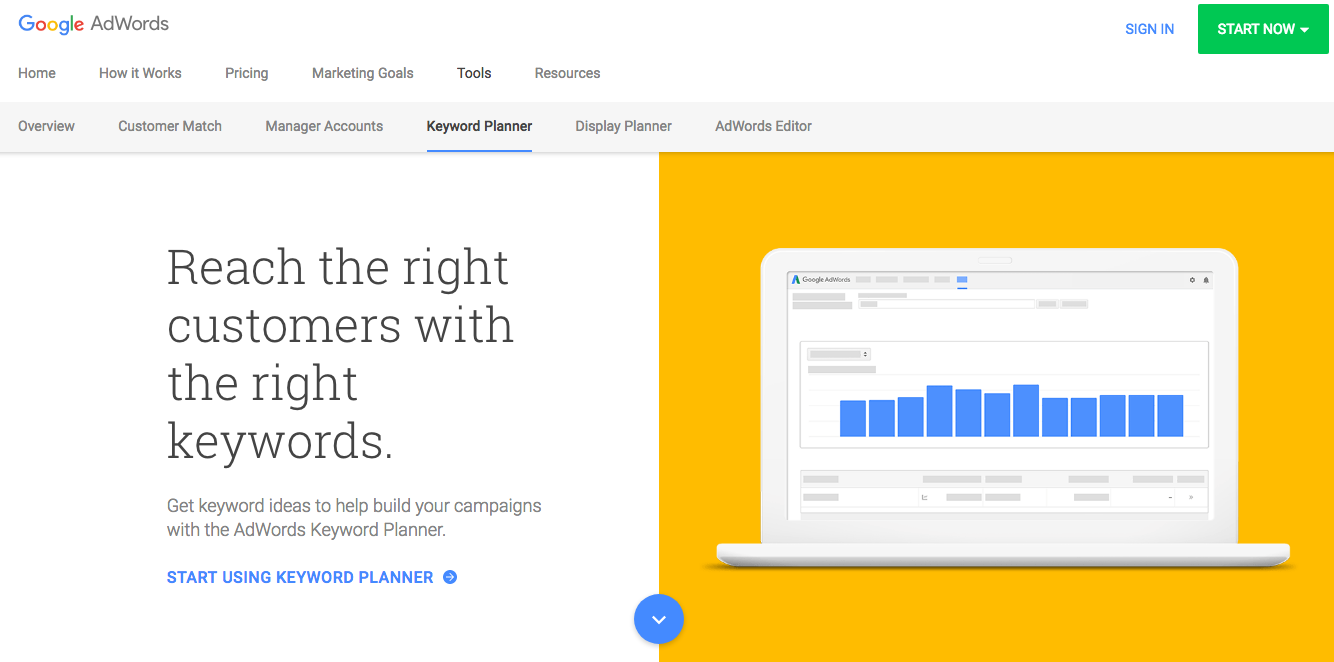

Again, your competitors’ articles can be useful. Check their articles within the same topic and see which keywords they’ve used.
2) Use Copywriting Formulas to Increase On-page Engagement
Let’s face it: most blog post introductions suck.
They’re overly complicated, too company-centric and above all, boring to read. And even if they’re actually on point, many fail to address the one question that’s on every reader’s mind:
How will this post solve my problem?
With only seconds to capture attention, it’s become more important than ever to captivate readers with a compelling introduction, which is one of the most important parts of your article (second only to your headline).
Humans have an attention span of only 8.25 seconds (that’s one second lower than a goldfish), which is the amount of time you have to convince readers that your content is worth reading. So your introduction must let your readers know that they’ve come to the right place and that you understand their pain.
And there’s no better way to do that than using a copywriting formula, which can provide the basic framework that will take your content to the next level. Next level content sells your reader on the solution you provide to them, and it will keep readers coming back for more.
One of my favorites is called the Problem, Agitation, Solution formula (or PAS). What is the PAS formula and how does it work? Start by presenting a problem that your “buyer persona” is experiencing.
Learn More: The Complete Guide to Developing and Using Buyer Personas
If readers relate to the problem in your introduction, they’re much more likely to read the entire post. Here’s an example from one of Neil Patel’s articles:
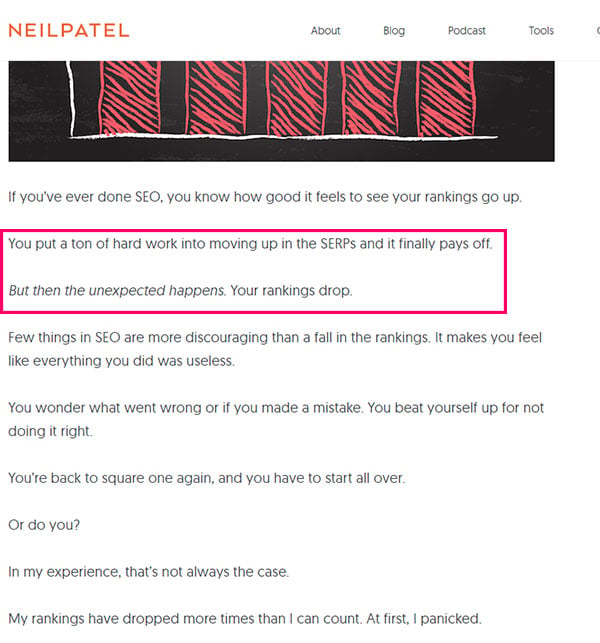
Next, agitate the problem. Why is the problem important and what are the consequences of not doing anything about it?
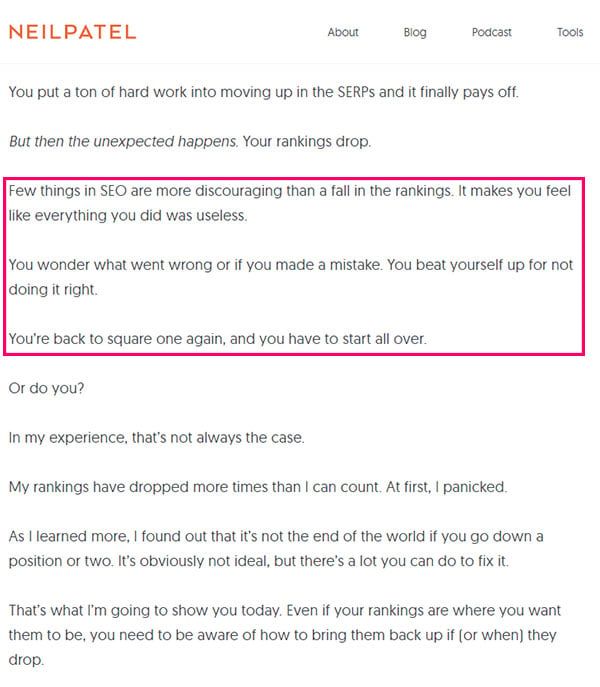
Lastly, provide a solution to the problem. Give people a preview of what they can expect from reading the article and how it will help them solve their problem.
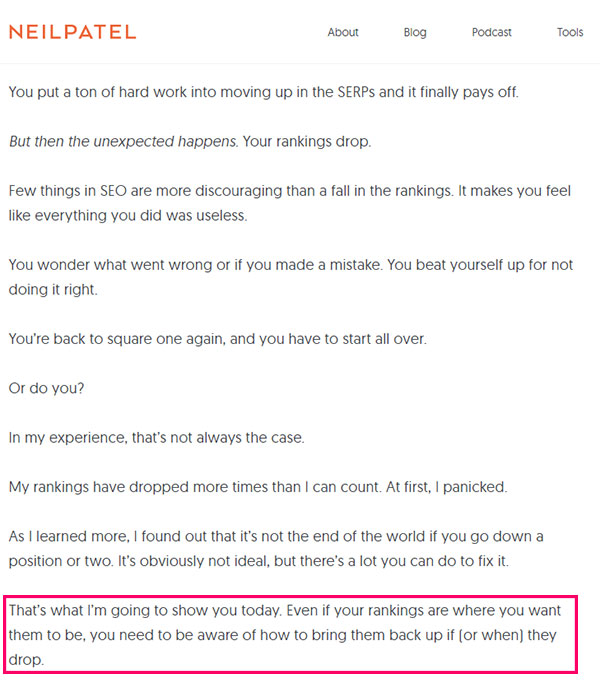
Keep it simple and to the point.
The best part?
The PAS formula doesn’t just work for articles; it also works for other types of content, such as sales letters, landing pages, marketing emails, and more.
Copyblogger used the PAS formula in a blog post that promotes a new product:
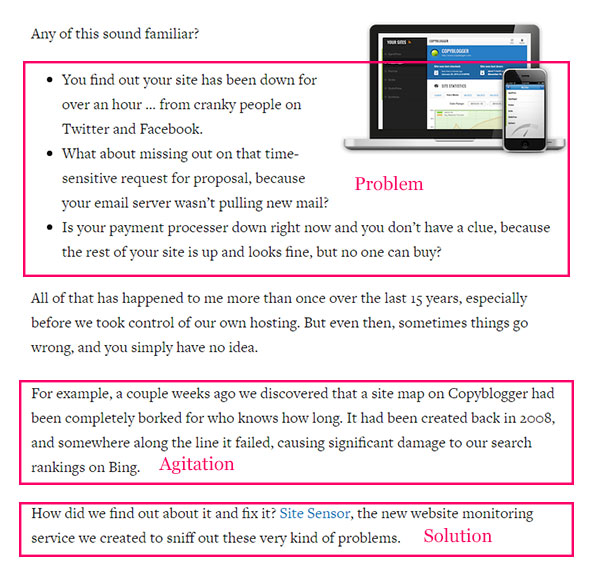
Campaign Monitor also used it on one of their landing pages:
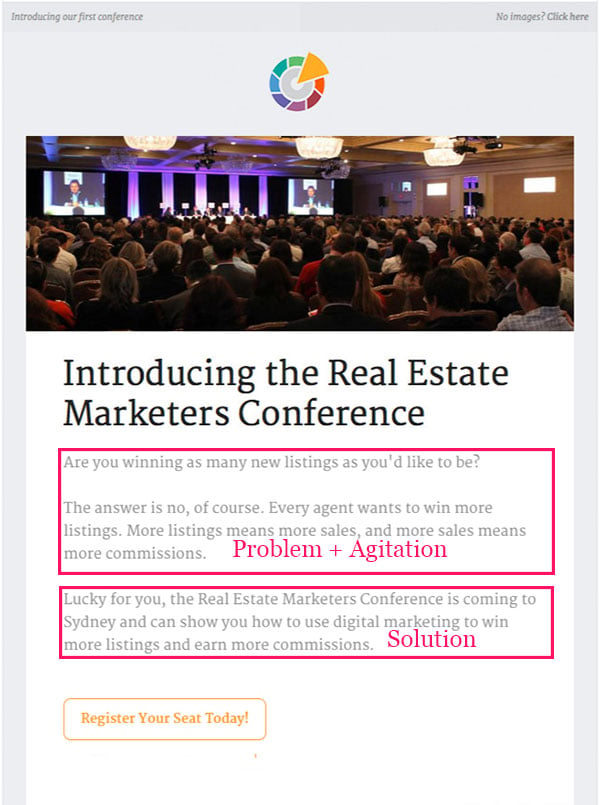
As you can see, only your imagination sets the limit for how you can use the PAS formula.
3) Use Content Upgrades to Increase Conversions
You’ve probably heard about content upgrades and how effective they are.
I’m not going to tell you how to create effective content upgrades, as there’s plenty written on that already, but here’s a handy infographic from our team at Sleeknote to inspire you.
Learn More: Why Infographics Are the Best Content Investment You’ll Ever Make
I will, however, tell you how to sell your content upgrades in your blog post copy.
Many marketers spend hours creating content upgrades and adding it to their post, but then forget that they have to actually sell it to the reader. The content upgrade isn’t going to sell itself; you have to let people know why and how it can benefit them.
Start by writing a small introduction for your content upgrade where you tell people what the content upgrade is, how to get access to it, and why they should download it.
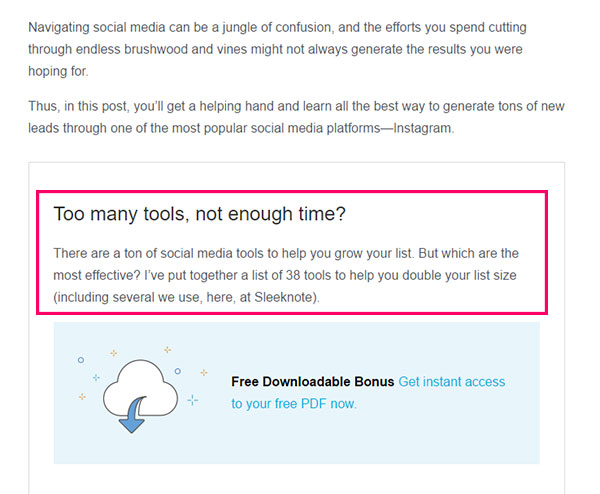
Once you’ve introduced your content upgrade, you need to include a clear call to action to entice readers to subscribe.
We’ve experimented quite a bit with this and came up with a formula to increase conversions: Question → Verb → Benefit. This is what our template looks like:

This is how it looks in action:

As mentioned, it’s all about solving a problem for your readers in a quick and efficient way.
Lastly, I want to emphasize the importance of selling your content upgrade throughout your content and not just in the lede. By this, I don’t mean you should stuff your content upgrade into every other paragraph in your blog post. Rather, the way you write your content should always lead your readers to wanting more, and then ta-da! present them with the perfect content upgrade at that point.
We already know that most people don’t read all the way through your article, so be sure to present your content upgrade early on in the post, as well as midway through and near the end.
Conclusion
Writing great content is not a skill that comes overnight. It takes time and you need to test what works best for you and your audience.
Whether you’re just getting started or have been writing for years, I hope these copywriting tactics have provided some new insight into how you can engage your readers and convert them into subscribers or customers!
Have you tried any of these tactics, or do you have others you’d like to share? Feel free to leave a comment below.



